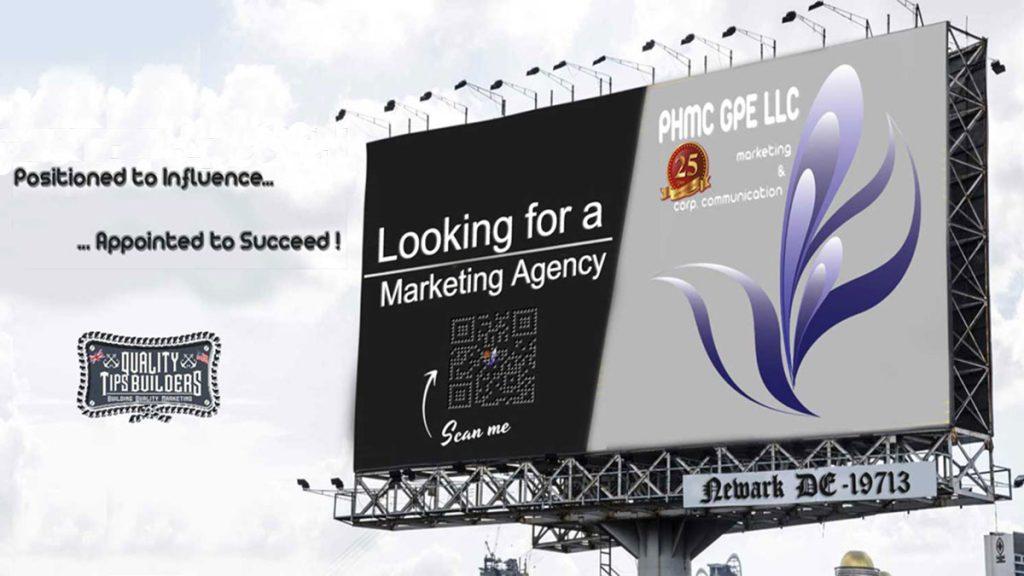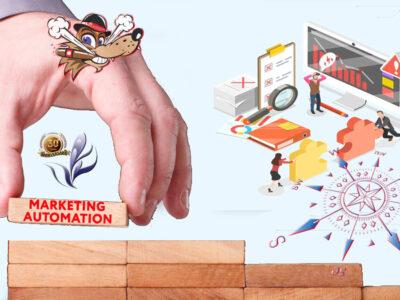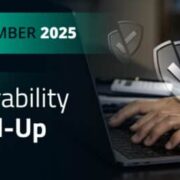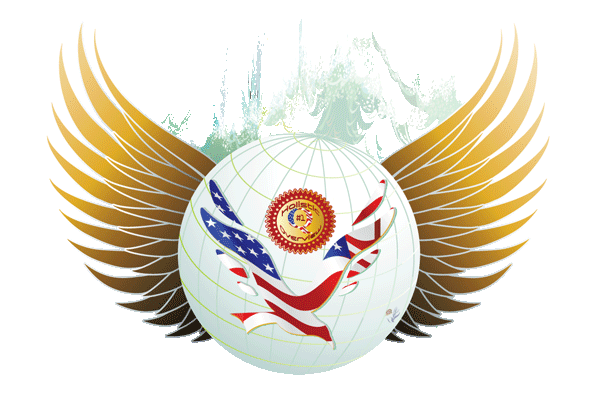Post Views: 1,485
Active marketing refers to tactics in which organizations actively engage with clients via direct communication channels.
On the other hand, passive (Inbound) marketing refers to techniques in which organizations distribute marketing materials and wait for clients to find them.
- Active marketing includes direct mail, cold calls, in-person meetings with vendors and customers, telemarketing, email marketing, sales appointments, and event marketing.
- Passive marketing strategies include SEO, content marketing, social media account creation, public relations, and website construction.
Active ads often result in immediate responses, while the results of passive ad campaigns can take time to materialize.
- Active marketing is assertive and directly pushes the message to consumers through campaigns and ads.
- Passive marketing attracts audiences indirectly through strategies like SEO and content marketing.
Continue Reading
Active Marketing Definition
Active marketing is a proactive technique for distributing your company’s message that is essentially “Outbound.” It is a targeted technique to elicit immediate responses from prospective clients. This effective marketing method involves businesses starting the conversation and controlling the message.
Examples of Active Marketing Strategies

- Direct Mail: This strategy involves sending marketing materials to potential customers via mail. It can include catalogs, postcards, or letters detailing your company’s products or services.
- Cold Calls: Cold calling is a technique in which sales personnel contact individuals who have not previously expressed interest in the offered products or services. It’s a way of generating leads or interest.
- Email Marketing: This type of direct marketing involves sending commercial or fundraising messages to an audience through email. It’s a way to reach consumers directly via electronic mail.
- Event Marketing: Businesses promote their products or services through branded events. These events can range from trade shows, product launches, seminars, and webinars to conferences.
- Telemarketing: Telemarketing involves contacting potential customers to promote products or services. It’s a direct and immediate form of marketing communication.
- Meeting Vendors and Customers Face-to-Face: This traditional marketing method involves direct interaction with potential customers and vendors, typically in a sales or business setting.
Ideas to convert your marketing from Passive to Active
Switching from passive to active marketing requires a strategic adjustment. Unlike most passive marketing techniques, active marketing does not sit back and wait for clients to arrive. Instead, it conveys the message, initiates conversations, and encourages interaction. Here are some ideas from the competition for transitioning from passive to active marketing:
- Cultivate an Active Presence on Digital Platforms: Launch advertising campaigns on platforms like Google and Facebook, utilizing Social Media Marketing (SMM) and Search Engine Marketing (SEM). These platforms provide ease, affordability, and the opportunity to reach your target audience using demographic and geographical criteria.
- Increase Involvement on Social Media: The value of actively participating on social media sites cannot be overstated. Aim for content that educates, entertains, or empowers your readers. By connecting with your followers consistently, you can keep them connected and interested.
- Inject Calls to Action (CTAs) in Gamification: Incorporate gamification components into your marketing to boost audience participation. In your CTAs, make it obvious what you want your audience to do: visit your website, enter a contest, or stay connected. This not only amuses but also boosts your website’s traffic.
- Implement measurable ROI actions: Focus on actions with a verifiable return on investment. This can include collecting email addresses through gamified contests, getting input via market research surveys, increasing event or workshop attendance, promoting discounts or sales, or investing in pay-per-click advertising.
Passive Marketing Definition
Passive marketing, or “Inbound Marketing“, is a strategy for attracting new customers to your organization by creating compelling content. The idea is to encourage potential customers to contact you or make a purchase choice by delivering valuable and exciting material. The customer is not immediately sold to but instead invited to interact with the brand out of interest.
Examples of Passive Marketing Strategies

- Content Marketing: This process entails producing and distributing valuable content at no cost to engage and convert potential leads into paying customers, turning customers into loyal repeat purchasers.
- SEO (Search Engine Optimization): This strategy involves optimizing your online content so that a search engine likes to show it as a top result for searches of a particular keyword.
- Social Media Marketing: In this, businesses create and share content on social media networks to achieve their marketing and branding goals.
- Blogging: Sharing information via a regularly updated website or web page, typically by an individual or small group.
- Passive Advertising: It refers to ads that do not directly sell a product or service but are subtly placed in the viewer’s environment, like product placements in movies or TV shows.
3 Steps to a Successful Passive Marketing Strategy
Step 1: Understand the Target Audience’s Needs
- Recognize their difficulties and desires.
- Identifying preferred communication channels and their decision-making process.
Step 2: Develop Engaging and Informative Content
- Address the audience’s concerns and queries
- Share relevant success stories and case studies
- Use various content types, including blog articles, videos, and webinars.
Step 3: Revise and Adapt Content Periodically
- Keep up with industry trends and new themes.
- Monitor audience involvement and comments.
- Make necessary revisions to enhance the content’s value and relevance.
Main Differences between Active and Passive Marketing

***
| CRITERIA |
ACTIVE MARKETING |
PASSIVE MARKETING |
| Process |
A traditional marketing method that directly interacts with potential customers and vendors, usually in a sales or business setting. |
A strategy that attracts customers through engaging content. Instead of direct selling, it encourages customers to engage with the brand out of interest. |
| Marketing Campaign |
Active marketing campaigns are aggressive and aim to persuade consumers to act immediately. Examples include sales calls, direct mail, and pay-per-click advertising. |
Passive marketing campaigns subtly inspire consumers to engage or make purchase decisions through valuable and interesting content. Examples include content marketing, SEO, and blogging. |
| Social Media Platforms |
Active marketing on social media platforms entails direct promotion and advertising, like sponsored posts and ads. |
Passive marketing on social media platforms involves creating and sharing engaging content that naturally attracts consumers to the brand. |
| Interaction |
Involves direct and immediate interaction with customers. |
Relies on customers to initiate interaction after being drawn in by engaging content. |
| Outcome |
Immediate results can be expected. |
Results are often long-term and can take time to manifest. |
| Cost |
Typically involves a higher cost as it includes hiring salespeople, buying ad space, etc. |
Usually less costly as it leverages free or low-cost channels like SEO, content marketing, etc. |
***
- Approach: Active marketing adopts an outward approach, initiating contact with potential customers and directly promoting its product or services. A passive campaign, on the other hand, takes an internal strategy focused on bringing clients to a business through high-quality content and valuable information.
- Target Audience: Active marketing requires the marketer to seek out the target audience actively. Passive ads allow the target audience to find the marketer organically, typically via search engines or social media platforms.
- Time Frame: Active marketing usually aims for quick conversions and immediate results. Passive tactics, on the other hand, focus on gradually developing a brand and reputation.
- Measurement: Active marketing efforts can be easily tracked and measured, such as through click rates and conversion rates. Passive ad outcomes are more difficult to quantify but might include measures such as website traffic, time spent on the site, and organic search rankings.
- Cost-effectiveness: Active marketing usually includes paid advertising, such as social media or search engine marketing. Passive marketing campaigns use free or low-cost methods like SEO, social media posts, and content marketing to reach potential clients.
Pros & Cons of Active (Outbound) Marketing

Pros
- Instant Feedback: Active marketing allows businesses to get immediate feedback and results. This feedback is invaluable in adapting and improving marketing strategies.
- Targeting: With active marketing tactics, businesses can target specific demographics, locations, and audience interests, enabling more precise marketing efforts.
- Control: Active marketing gives businesses control over their messaging and how it’s promoted to the target audience.
- Personal Touch: In a digital environment that frequently lacks a personal human touch, active marketing allows consumers to engage more deeply. Businesses can create connections that drive loyalty and continual engagement by reacting to clients individually. As demonstrated in recent years, modern consumers value personalization and authenticity, which may be offered through active marketing.
Cons
- Cost: Active marketing often requires a substantial budget, especially for paid advertising over digital platforms.
- Time-Consuming: Active marketing can be time-consuming, requiring regular engagement and interaction with the target audience.
- Risk of Negative Feedback: Due to its public nature, active marketing creates the potential for immediate negative feedback or criticism.
- Strong Networking Skills Required: Active marketing necessitates a skill set that only some possess. It requires reaching out and building relationships, which may not be suitable for those who are not natural ‘networkers.’ This means that for a company to succeed in active marketing, its workforce must be skilled at networking and able to engage with a diverse spectrum of people.
Pros & Cons of Passive (Inbound) Marketing

Pros
- Cost-Effective: Passive strategies such as content marketing or SEO are typically less expensive than active marketing tactics, making them ideal for businesses with tighter budgets.
- Long-Term Results: Unlike active campaigns, which often see immediate but potentially short-lived results, passive campaigns can produce consistent website traffic over a longer period.
- Brand Awareness: Passive techniques like blog posts or social media updates can gradually build a company’s brand and foster a loyal following.
- Outsourcing Capacity: Managing all aspects of marketing can be difficult. Passive marketing offers a silver lining by allowing you to delegate chores. Outsourcing to specialists, whether for website development or content creation to increase SEO results, can be an effective approach to managing workload while preserving quality.
- Expanded Creativity and Flexibility: Another advantage of passive marketing is the opportunity to take a new strategy. Outsourcing and automation solutions alleviate the stress of constantly publicizing your firm, freeing up time for essential activities.
Cons
- Time-Intensive: Passive tactics, particularly SEO and content creation, can require significant time investments before generating results.
- Unpredictable: It can be difficult to precisely target specific demographics or control the messaging with passive marketing methods.
- Slow Feedback: While active marketing offers immediate feedback, passive methods often require a longer timeframe to gather and interpret audience responses.
***
How to use Active & Passive Marketing in Different types of Business?
- B2B Businesses: B2B businesses often employ active and passive marketing strategies. Active marketing strategies, such as direct emails and sales presentations, efficiently engage potential clients and demonstrate the value of their products. Passive marketing initiatives, such as creating high-quality, useful content and optimizing SEO, help to establish brand authority and retain continuous website traffic.
- B2C Businesses: B2C businesses often lean towards active strategies due to the direct customer engagement they provide. Social media campaigns, promotional events, and personalized emails enable these firms to build a more personal relationship with their customers, resulting in quick sales. Passive tactics, like content marketing and SEO, are also used to build long-term customer loyalty and brand awareness.
- Local Businesses: Active techniques such as involvement in community events, local advertising, and direct mail campaigns can effectively reach a close target audience. Passive marketing also plays an important part, with strategies such as having a strong presence in local business directories and utilizing local SEO.
- E-commerce Businesses: E-commerce businesses heavily rely on both active and passive marketing. Active techniques such as pay-per-click advertising, retargeting campaigns, and email marketing are vital for generating rapid revenue. Passive SEO optimization, blogging, and social media marketing are important for establishing a long-term brand identity and driving constant website traffic.
Warning: About Intrusive Marketing
Intrusive and Active Marketing are commonly confused yet have little in common. Robust competitor analysis shows that Intrusive Marketing aggressively invades customers’ space and time.
Imagine sitting in a coffee shop with your favorite latte and a novel that has completely captivated you. Someone interrupts this serene moment to promote their product. Intrusive marketing is the disruption. Unlike active marketing, Intrusive Marketing is persistent and unwanted.
Conversely, intrusive marketing might annoy consumers. Companies risk losing customers by bombarding them with ads. Viewers typically have to remove these intrusions, which frustrate them and tarnish the brand. Intrusive Marketing can draw attention, but it must balance attractiveness and discomfort. When used strategically, it may be a powerful tool, but when misused, it can hurt corporate results.
The balance of Active & Passive within a campaign
Several criteria determine the right mix between active and passive marketing approaches for success. Understanding your business model is the first step. Highly competitive industries require strong, active marketing to stand out, while well-established brands in less competitive markets can use passive and active marketing to build brand recognition. Corporate brand identity is also important. Active marketing can boost sales and growth but may conflict with your brand value, making passive marketing a good alternative for keeping a constant public image.
However, the best marketing plan is a balanced mix of active and passive. A successful marketing strategy requires a balanced blend of active and passive strategies, like a well-seasoned dish. Imagine a gamified campaign with active engagement techniques and powerful passive messaging to support it. Using an active customer community, this data-driven approach will likely see many businesses succeed in the market and develop brand loyalty. The balance is about choosing the correct elements for your business and audience, creating a blend that connects and leads to a sustainable, successful campaign.
***
This gave rise to some questions …
In the dynamic world of digital marketing, a balanced approach with active and passive strategies is crucial for success. Whether you’re a B2C, local, or e-commerce business, these strategies can be customized to meet your business objectives, ensuring sustainable growth and consistent website traffic. This approach enables companies to engage customers and establish long-term relationships, directly building brand awareness and recognition. By correctly implementing these marketing strategies, businesses can create a personal connection with consumers, drive immediate sales, and foster customer loyalty.
How do we differentiate passive vs. active marketing campaigns?
Active marketing campaigns involve direct and immediate efforts to reach consumers through email, direct mail, and telemarketing. Passive marketing relies on customer engagement through SEO, blogging, and social media presence.
Which one should you use: active advertising or passive marketing strategy?
When it comes to choosing the right marketing strategy between active and passive advertising strategies, it’s all about finding the right balance. Businesses should prioritize active marketing messages to generate immediate sales and passive strategies for long-term brand recognition and consistent website traffic.
How do you balance Active and Passive within a campaign?
Balancing active and passive strategies within a campaign involves strategic planning and monitoring. The key is actively pursuing customer engagement while passively creating valuable content to attract website traffic and build brand recognition.
Discover More:
The Inbound Marketing Week

***






















Comments